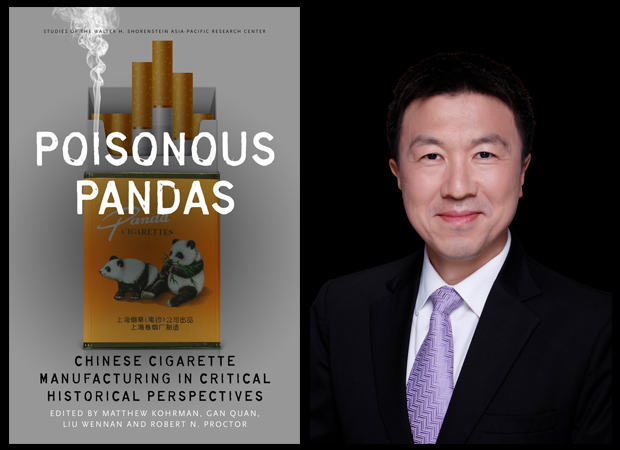Stanford University Press: A favorite icon for cigarette manufacturers across China since the mid-20th century has been the panda, with factories from Shanghai to Sichuan using cuddly cliché to market tobacco products. The proliferation of panda-branded cigarettes coincides with profound, yet poorly appreciated, shifts in the worldwide tobacco trade. Over the last 50 years, transnational tobacco companies and their allies have fueled a tripling of the world’s annual consumption of cigarettes. At the forefront is the China National Tobacco Corporation, now producing 40 percent of cigarettes sold globally. What’s enabled the manufacturing of cigarettes in China to flourish since the time of Mao and to prosper even amidst public health condemnation of smoking?
In Poisonous Pandas, an interdisciplinary group of scholars comes together to tell that story. They offer novel portraits of people within the Chinese polity―government leaders, scientists, tax officials, artists, museum curators, and soldiers―who have experimentally revamped the country’s pre-Communist cigarette supply chain and fitfully expanded its political, economic, and cultural influence. These portraits cut against the grain of what contemporary tobacco-control experts typically study, opening a vital new window on tobacco―the single largest cause of preventable death worldwide today.
Related Reading:
“In China, Industry Push-Back Stubs out Anti-Smoking Gains,” Christian Shepherd, Reuters, May 31, 2018
“China’s Ministry in Charge of Tobacco Control Had Ties to the Tobacco Industry. Not Anymore,” Sidney Leng, South China Morning Post, March 15, 2018
“The End of China’s ‘Ashtray Diplomacy’,” Heather Timmons and Quartz, The Atlantic, December 30, 2013
“The Political Mapping of China’s Tobacco Industry and Anti-Smoking Campaign,” Cheng Li, Brookings, May 30, 2012
Author’s Recommendations:
Slow Violence and the Environmentalism of the Poor, Rob Nixon (Harvard University Press, 2013)
Frames of War: When Is Life Grievable?, Judith Butler (Verso; Reprint edition 2010)
Homo Sacer: Sovereign Power and Bare Life, Giorgio Agamben, Translated by Daniel Heller-Roazen (Stanford University Press, 1998)




